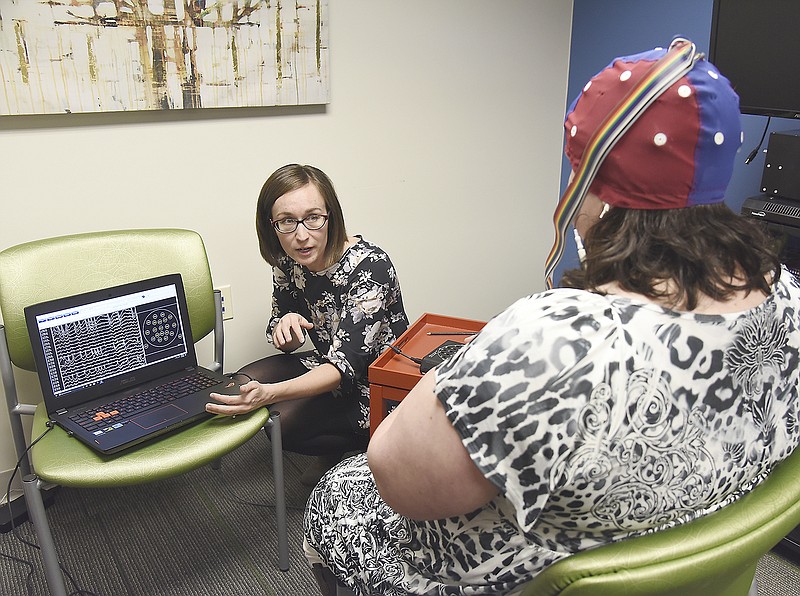A brain can be trained to reduce the symptoms of depression.
Or the symptoms of attention deficit hyperactivity disorder.
Or many other conditions.
Pathways Community Health will introduce neurofeedback therapy as a resource to help clients deal with conditions without the use of some medications.
Through System of Care Community for Early Signs and Symptoms, Pathways received a grant to provide the equipment and training for the therapy.
Jessica Ashley, a psychologist with Pathways, likely will begin using the therapy sometime this month.
At a "very simplistic level," your brain works on electrical signals, Ashley said. Using neurofeedback, Ashley attaches a cap containing multiple probes to a patient's head (nothing breaks the skin, and there should be no pain). The cap is wired to a laptop, on which a psychologist (or therapist) monitors brainwaves.
Ashley can take data from the brainwaves and compare them to responses the patient gives to questions concerning depression or other disorders to identify markers of depression in the waves.
She'll be able to identify "anything that's outside of the average in terms of ideal functioning in your brain," Ashley said, "and how it communicates with other parts of the brain."
SOCCES operates off a "stress vulnerability" model, program manager Jennifer Johnson said.
The more chronic the stress, the more likely someone is to fall into an episode of psychosis, Johnson said.
Three major points of the grant are that it relies on evidence-based services, includes a system that optimizes family-involvement and incorporates a system of family values.
"We're really trying to engage families," Johnson said. "They are the experts about their children, and they can tell us a lot about them."
Pathways will be able to do assessments of clients to see what each client's ideal brainwaves are. The organization can then use training software to change the way the electrical signals work.
As a demonstration, Pathways program supervisor Wendy Reese agreed to let Ashley test the equipment on her.
During different parts of the day and depending on what a person is doing, certain parts of the brain are more active than others. The first time a neurofeedback reading is taken, it records data from about 20 points in the brain. Future sessions might require only a few specific points of the brain to be activated.
Neurofeedback is intended to help the brain learn how to improve its own self-regulation.
For Wednesday's demonstration, Ashley took readings on all of Reese's brain. One thing the program can do is train a brain to relax. As Reese sat quietly in a dimmed room, the computer played harp music. The more Reese's brain relaxed, the louder the music got.
There really was no need for Reese to do anything, Ashley said. Her brain made adjustments as she sat.
"(The harp music) gets quieter when the brain is not doing what we want it to do," Ashley explained. "(The program) rewards the brain with more music when it does what we want."
What psychologists want is a normalization of certain brainwaves. There are several different styles of waves, but Ashley discussed three primary types. Alpha waves are prominent during restful states, beta waves during active states, and delta waves during deep meditation or sleep.
Reese said she anticipates many of her clients can use neurofeedback.
"We have several people with anxiety and depression who would benefit," she said. "This stuff is fascinating. (When you participate), you're retraining your brain."

